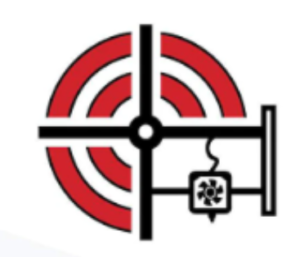Exciting news to kick off today’s 3D Printing News Briefs: Formlabs Co-Founder and CEO Max Lobovsky is the recipient of the 2026 AMUG Innovators Award. Then, America Makes announced a new Project Call, MIT researchers are working to make the performance of 3D printed parts more reliable, and the University of Colorado Boulder is advancing campus sustainability with a 3D printing recycling program. Finally, medical students in Canada created a modular, low-cost, 3D printed medical training tool.
Formlabs CEO Max Lobovsky to Receive AMUG Innovators Award
The Additive Manufacturing Users Group (AMUG) non-profit organization works to educate and advance AM applications for industrial purposes, and its annual gathering is designed for both novice and expert AM users. The 2026 AMUG Conference will be held in Reno, Nevada from March 15–19, and it was just announced that the recipient of AMUG’s esteemed Innovators Award is Max Lobovsky, the Co-Founder and CEO of Formlabs. Together with fellow MIT graduate students David Cranor and Natan Linder, Lobovsky developed the Form 1, the first affordable, professional SLA 3D printer. He’s been the CEO since the company was founded in 2012, helping to guide it from a successful Kickstarter campaign all the way to double unicorn status with a valuation over $2 billion. The idea of commercializing an inexpensive desktop 3D printer came about from Lobovsky’s MIT Media Lab experiences and a class called “How to Make Almost Anything,” and now the company has sold more than 130,000 3D printers. The Innovators Award is given to those who have cultivated innovations that advance the AM industry, and will be presented to Lobovsky at the 2026 AMUG Conference. During the Innovators Showcase at the event, Lobovsky will share his experiences, ideas, and insights with the audience.
“The AMUG Board of Directors admires his story. Max was an obvious selection for the Innovators Award, and we were unanimous in our decision,” said Shannon VanDeren, AMUG president.
“Formlabs has had a dramatic impact on the 3D printing landscape. Its success across the personal and professional spaces, from individuals to startups to global industry leaders, has greatly expanded the adoption, exploration, and consumption of the technology. Max’s leadership and tenacity deserve to be recognized by our Innovators Award.”
America Makes Announces $1.3 Million CATACS Project Call
Recently, America Makes and the National Center for Defense Manufacturing and Machining (NCDMM) announced a new project call, Corrosion of Additive – Tested At Component Scale (CATACS). Funded by the Office of the Under Secretary of Defense, Manufacturing Technology Office (OSD ManTech), CATACS is worth a total of $1.3 million and focuses on two main topic areas, with two awards anticipated. We’re continually seeing the Department of Defense invest in AM, but due to a lack of widely accepted testing and processing methods, qualification and certification for metal 3D printed parts are still an issue. There are unique corrosion concerns specific to material properties produced with AM, so the CATACS program will work to establish and validate a framework for evaluating metal 3D printed part corrosion testing needs. The first topic area will focus on corrosion performance in high-temperature environments, while the second is about thermal management systems, focusing on interactions between AM microstructures and working fluids under varying thermal conditions across flow channels and complex geometries. Projects should feature validated prototypes tested in relevant settings (TRL 4-7), and show manufacturability through pilot builds and controlled processes (MRL 4-7).
“CATACS is about putting real AM hardware to the test in harsh conditions — because corrosion will find the weak points. We’re asking proposers to bring their best parts, set a plan to stress them in extreme environments, and let the sea attack. That is CATACS,” said Ben DiMarco, Technology Transition Director at America Makes.
Submissions are due by 5 pm ET on December 2, 2025. Please reference the request for proposal (RFP) for all the details and guidelines.
MIT Topology Optimization Research Makes 3D Printed Parts More Reliable
A pair of MIT researchers are working to make complex 3D printed parts more reliable by allowing computer designs to incorporate a printer’s limitations, thus achieving better control over material performance. Topology optimization is an advanced computational design technique that can generate new material structures which often outperform conventional designs, such as optimizing stiffness and strength. However, the method often creates designs at very fine scales, which some 3D printers can’t reliably reproduce due to issues like print head size weak bonding between layers. So the researchers wanted to fix the disconnect between how a material is expected to perform, and how it actually does. Previously, Professor Josephine Carstensen developed an algorithm that embedded information about nozzle size into design algorithms, so she and PhD student Hajin Kim-Tackowiak used that as a jumping off point to account for 3D printing’s limitations during design. In experiments, they found that traditionally designed materials deviated from their planned mechanical performance more than ones designed with the pair’s new technique. Essentially, their approach can make materials that result in parts with more reliable performance at most densities.
“If you don’t account for these limitations, printers can either over- or under-deposit material by quite a lot, so your part becomes heavier or lighter than intended. It can also over- or underestimate the material performance significantly. With our technique, you know what you’re getting in terms of performance because the numerical model and experimental results align very well,” explained Carstensen, Gilbert W. WInslow Associate Professor of Civil and Environmental Engineering.
To learn more, you can read their published paper here.
CU Boulder Launches Campus 3D Printing Recycling Initiative
A student team at the University of Colorado Boulder’s College of Engineering and Applied Science is helping to increase sustainability on campus, thanks to a new 3D printing recycling program by the Integrated Teaching and Learning Program (ITLP). The idea came about in an engineering classroom, where the team was investigating how they could repurpose failed PLA prints and excess support structures. ITLP engineer Kathryn Penzkover helped the students develop their idea into a working system; after it was further refined by ITLP summer intern Eli Post, a mechanical engineering major, it was incorporated into the ITLP ecosystem. Failed or excess PLA prints are collected and ground into small fragments, before being flattened into sheets with the use of a T-shirt press. These sheets, which are free for students to use, are used as raw material for laser cutting projects. By transforming plastic 3D printing waste into reusable materials, the system reduces landfill impact, conserves resources, and supports student projects. The student team also won first place, and the People’s Choice Award, in the Student Idea Showcase at the 2025 Campus Sustainability Summit, and the Engineering Excellence Fund awarded them a grant to buy the polymer shredder.
“What excites me most about this project is that this started with students who saw a problem and decided to solve it,” said Kai Amey, director of engineering education and operations for the ITLP. “By backing their creativity with mentorship and resources, we are not only cutting down on waste, we are showing future engineers that they have the power to drive real change. Incorporating recycled plastic into hands-on engineering education turns what would have been waste into a shared resource for students. By making these materials freely available, we are reducing our environmental impact while giving students new opportunities to innovate and create.”
Medical Students Develop Low-Cost, Modular 3D Printed Training Tool

Dr. Mark Wheatcroft, a vascular surgeon at St. Michael’s Hospital, teaches residents using Tiffany Ni and Marco Istasy’s knot-tying board.
You might not realize, but knot-tying is an essential skill for surgeons, as a well-tied knot helps control bleeding, supports healing, and can reduce the risk of infection and complications. While less than ideal because these don’t simulate real-life situations, medical students often practice typing knots around water bottles, doorknobs, or their own thighs, as there hasn’t been a standardized learning tool…until now. Medical students Tiffany Ni and Marco Istasy decided to develop a low-cost, modular tool that was easy to make, and determined the optimal design for a 3D printed surgical know-tying board while at Unity Health Toronto. In 2020, they impressed Dr. Andrew Brown, an interventional radiologist at St. Michael’s Hospital, with their prototype, and he connected the pair with residents and fellows from the Division of General Surgery and Vascular Surgery at Unity Health to gain end-user feedback. That same year, they launched RISE MD (Research, Innovation, Simulation in Education), a 3D printed medical tool startup, and their idea has become its first commercially available learning tool, the RISE MD surgical knot-tying board.
The 3D printed board has suction cups on the base to secure it to a flat surface, three pegs to stretch a rubber band to practice with different tension gradients, a bar to store extra string and rubber bands, and modular tubes that can be threaded into the board, simulating a body cavity. The RISE MD surgical knot-tying board can also be partially disassembled for travel, which is very handy. After Dr. Brown introduced Ni and Istasy to Dr. Mark Wheatcroft, a vascular surgeon at St. Michael’s Hospital, he purchased several of the board to help train his own students, and calls the tool “compact, versatile and robust.” He also helps run an annual National Vascular Bootcamp for surgical residents across Canada so they can refine their skills, and at the most recent one, he used one of the 3D printed boards to demonstrate tying a flat reef knot, which is used to tie off blood vessels or join the edges of a wound. Ni said seeing surgical residents practice their knots on RISE MD’s tool was “gratifying and humbling.”
Subscribe to Our Email Newsletter
Stay up-to-date on all the latest news from the 3D printing industry and receive information and offers from third party vendors.








